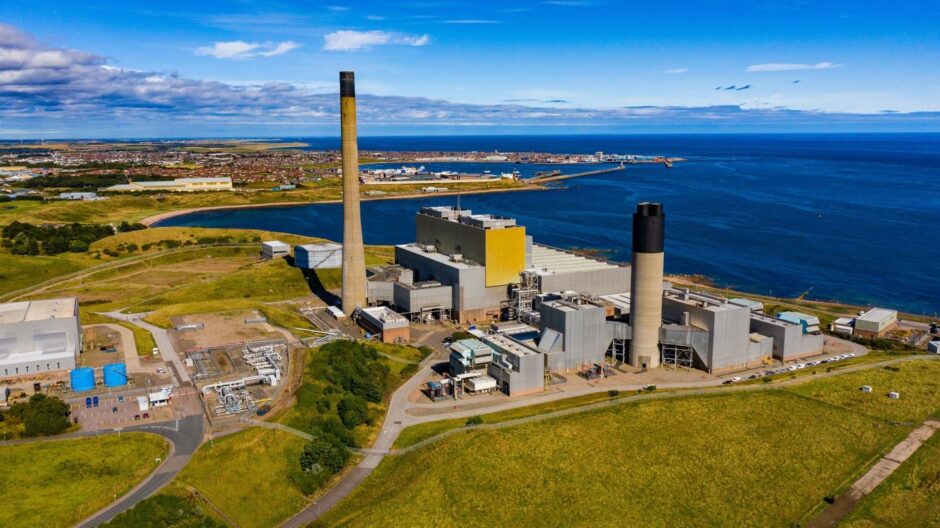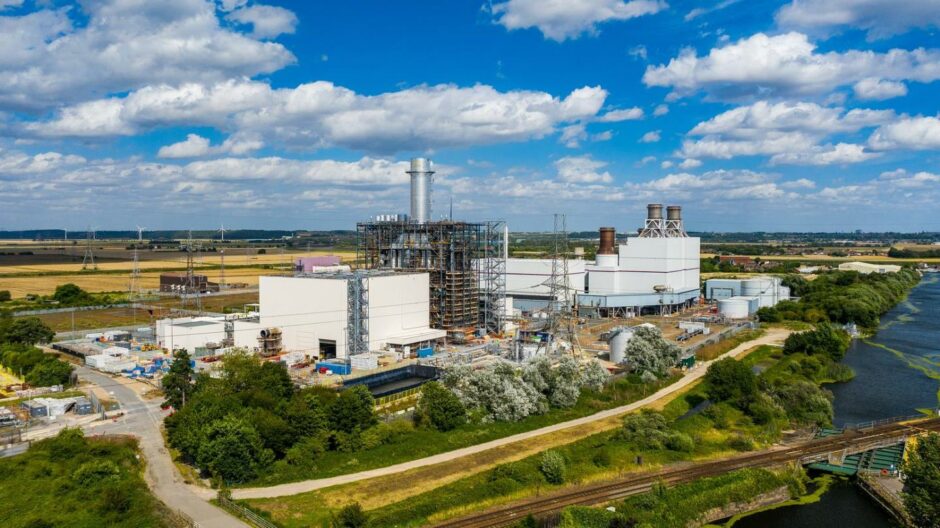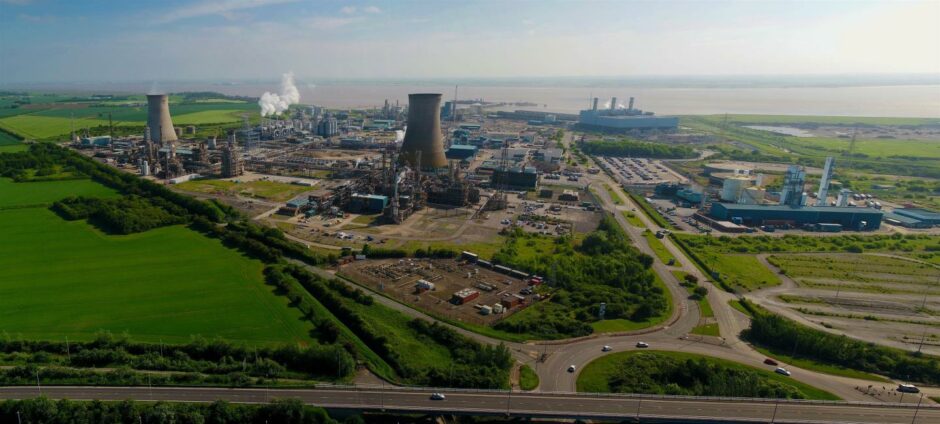
SSE Thermal and Equinor have formally submitted two low-carbon projects into a competition for UK Government funding.
The pair are planning to develop two new power stations equipped with carbon capture and storage (CCS) technology that will help Westminster to hit its net zero goals.
One will be located at Peterhead, Aberdeenshire, while the other will be at Keadby in the north-east of England.
Peterhead Carbon Capture Power Station would decarbonise Scotland’s only major thermal generation site.
Captured emissions would be transported and stored using pipelines being developed by the Acorn project, which is based nearby.
Keadby 3 Carbon Capture Power Station would plug into the shared pipelines being developed through the Zero Carbon Humber and East Coast Cluster partnerships, with CO2 stored under the southern North Sea.
In total, the two low-carbon power stations would capture up to three million tonnes of CO2 a year – 10% of the UK Government’s 2030 target.
Martin Pibworth, SSE’s group energy and commercial director, said: “SSE’s Net Zero Acceleration Programme will see us invest £12.5bn over the next five years with a focus on low-carbon infrastructure, and whilst renewable generation is at the heart of that strategy, we know we will need flexible low-carbon power to ensure security of supply when the wind doesn’t blow and the sun doesn’t shine.
“That is why carbon capture projects, like the ones we are developing at Keadby and Peterhead, are so important. The UK Government clearly recognises the pivotal role carbon capture will play in helping to achieve net zero targets, with the Cluster Sequencing Process essential to getting projects up and running as soon as possible.”
SSE Thermal, a subsidiary of SSE (LSE: SSE), and Equinor (OSLO: EQNR) unveiled plans to introduce a “cutting-edge” CCS system at the Peterhead Power Station last year.
If the project gets the green light it could support hundreds of jobs during the construction and operations phase.
As part of its blueprint for a green industrial revolution, the UK Government pledged to deploy CCS in two industrial clusters by the mid-2020s, and two further clusters by 2030.
‘Phase 2’ of ‘Track 1’
Winners of the ‘Track 1’ process were announced in October, with HyNet and the East Coast Cluster bringing home the bacon.
The Scottish Cluster was selected by ministers as the reserve scheme, a decision that sparked confusion and anger from many north of the border.
Peterhead and Keadby have been put forward into ‘Phase 2’ of the ‘Track 1’ process, which covers individual emitter projects.
It means that they will be bolted on to the cluster winners and is designed to ensure schemes can still progress, even if they weren’t part of the clusters that were selected.
Keadby will connect to the East Coast Cluster, while Peterhead will hook up the the Scottish Cluster should it get bumped up to ‘Track 1’.
Projects selected will have the first opportunity to be considered to receive necessary support, with a decision expected around May.
SSE Thermal and Equinor are also working in collaboration on two further projects in the Humber.
Keadby Hydrogen would be the world’s first 100% hydrogen-fuelled power station, while Aldbrough Hydrogen Storage, located in East Yorkshire, would be one of the world’s largest storage facilities.
As a standalone Equinor is developing the Hydrogen to Humber (H2H) Saltend project in the region, which is also vying for government support.
Grete Tveit, senior vice president for low carbon solutions at Equinor, said: “Keadby 3 Carbon Capture Power Station and Peterhead Carbon Capture Power Station will play important roles in providing flexible dispatchable power working alongside intermittent renewables, giving enhanced low-carbon energy security.
“These projects will make a significant contribution towards the UK’s climate change ambitions, with Keadby 3 Carbon Capture Power Station further accelerating the Zero Carbon Humber vision to become the UK’s first net zero carbon cluster by 2040.”
Recommended for you


 © Supplied by SSE Thermal
© Supplied by SSE Thermal © Supplied by px Group
© Supplied by px Group